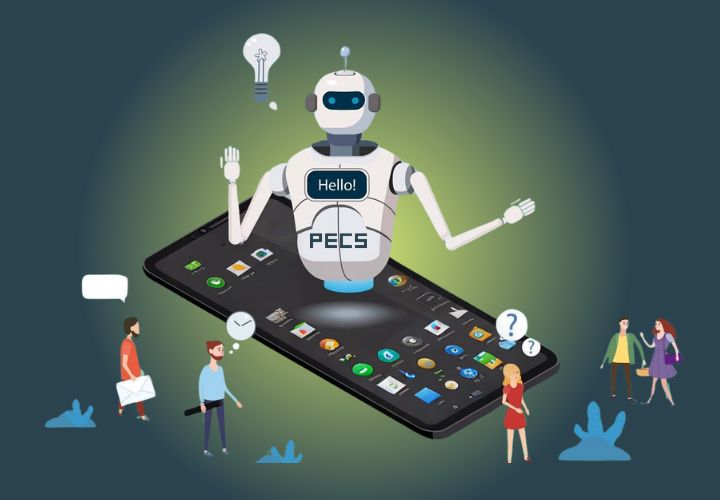
In the digital age of 2024, artificial intelligence (AI) chatbots have become an integral part of customer service, marketing, and business operations. These intelligent virtual assistants are revolutionizing the way businesses interact with their customers, providing instant support, personalized recommendations, and seamless user experiences. In this comprehensive guide, we’ll explore the basics of building an AI chatbot in 2024, from understanding the technology behind it to implementing best practices for design and development.
Understanding Artificial Intelligence Chatbots:
Artificial intelligence chatbots are software programs powered by machine learning algorithms and natural language processing (NLP) capabilities. These chatbots are designed to simulate human-like conversations with users, understand their queries, and provide relevant responses in real-time. By analyzing user input and context, AI chatbots can interpret intent, extract relevant information, and execute predefined tasks or actions.
Key Components of AI Chatbots:
Natural Language Processing (NLP): NLP is the core technology behind AI chatbots, enabling them to understand and process human language. NLP algorithms analyze text input, identify keywords and entities, and extract meaning from user queries to generate appropriate responses.
Machine Learning (ML): Machine learning algorithms allow AI chatbots to continuously improve and adapt their responses based on user interactions. By analyzing past conversations and feedback, ML models can learn from experience and enhance the chatbots accuracy and effectiveness over time.
Dialog Management: Dialog management systems govern the flow of conversation between the chatbot and the user. These systems manage context, maintain conversation history, and guide users through predefined dialog paths to achieve specific goals or objectives.
Integration with Backend Systems: AI chatbots often integrate with backend systems such as customer relationship management (CRM) software, e-commerce platforms, and databases to access relevant data and execute tasks. Integration enables chatbots to provide personalized recommendations, retrieve account information, process transactions, and more.
User Interface (UI): The user interface of an AI chatbot determines how users interact with the bot. Whether it’s a text-based interface, voice-based interface, or a combination of both, the UI should be intuitive, responsive, and user-friendly to ensure a positive user experience.
Best Practices for Building AI Chatbots:
Define Clear Objectives: Before building an AI chatbot, clearly define its objectives, target audience, and use cases. Identify the problems it will solve, the tasks it will perform, and the value it will provide to users and stakeholders.
Design Conversational Flows: Design conversational flows that guide users through natural and intuitive interactions with the chatbot. Anticipate user queries, provide clear prompts and instructions, and offer options for users to choose from to streamline the conversation flow.
Train and Test the Chatbot: Train the chatbots NLP and ML models using labeled data sets and iterative learning techniques. Test the chatbot extensively in simulated and real-world scenarios to identify and address potential issues, errors, and edge cases.
Implement Personalization: Personalize the chatbots responses and recommendations based on user preferences, behavior, and past interactions. Use data-driven insights to tailor responses, suggest relevant products or services, and create a personalized user experience.
Monitor Performance and Iterate: Continuously monitor the chatbots performance, gather feedback from users, and analyze usage metrics to identify areas for improvement. Iterate on the chatbots design, functionality, and content to enhance its effectiveness and meet evolving user needs.
Case Study: Building an AI Chatbot for Customer Support
Let’s consider a case study of building an AI chatbot for customer support in a retail e-commerce company. The objective of the chatbot is to provide instant assistance to customers, answer frequently asked questions, and facilitate product discovery and purchase.
Define Objectives: The objectives of the chatbot are to improve customer satisfaction, reduce support ticket resolution time, and increase sales conversion rates by providing timely and relevant assistance to customers.
Design Conversational Flows: Design conversational flows that address common customer inquiries, such as product availability, order status, returns and exchanges, and shipping information. Provide clear prompts and options for users to choose from to navigate the conversation flow.
Train and Test the Chatbot: Train the chatbots NLP model using labeled data sets of customer inquiries and responses. Test the chatbot in simulated and real-world scenarios to ensure accurate understanding of user queries and effective response generation.
Implement Personalization: Personalize the chatbots responses based on user preferences, purchase history, and browsing behavior. Recommend products based on user interests and past purchases to enhance the shopping experience.
Monitor Performance and Iterate: Monitor the chatbots performance metrics, such as response accuracy, user satisfaction ratings, and sales conversion rates. Gather feedback from users and customer support agents to identify areas for improvement and iterate on the chatbots design and functionality.
Conclusion:
In conclusion, building an artificial intelligence chatbot in 2024 requires a deep understanding of the technology, thoughtful design and development, and a commitment to continuous improvement. By leveraging natural language processing, machine learning, and best practices in conversational design, businesses can create intelligent virtual assistants that enhance customer experiences, drive engagement, and achieve business objectives. As AI chatbot technology continues to evolve, organizations that embrace innovation and prioritize user-centric design will remain at the forefront of the digital transformation landscape.
- Written by: admin
- Posted on: March 29, 2024
- Tags: Artificial Intelligence, AI Chatbot
